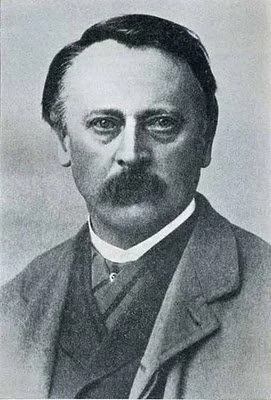Emblems and Embossments: The Occult Publishing Co.
Embossed cover of Franz Hartmann’s Magic, White and Black, or, The Science of Finite and Infinite Life – Containing Practical Hints for Students in Occultism.
The expressions of a book often extends to every detail. The spirit of a book, as well as the onus and locale of its author or publisher, is constituted in seemingly every facet of a design. This seems — accurately or not — to be particularly the case with the more ‘elderly’ of the occult books. Combine these dual arenas, and it is no surprise that such expressions also extend to the embossed, stamped, and emblematic covers of old occult books. Many of them tell a unique story, or contain a history seldom heard.
With this in mind, take a look at the sigilesque emblem for the Occult Publishing Co. of Boston, Massachusetts, in the. United States. A closer detail can be seen below:
Closer detail of Occult Publishing Co. embossment art on Franz Hartmann’s Magic, White and Black, or, The Science of Finite and Infinite Life – Containing Practical Hints for Students in Occultism.
The company imported and distributed Theosophical books around the New England area at the tail end of the 19th century. By way dispersion, they eventually made their way around the country. Unfortunately, little greater detail is known on this turn of the century purveyor of occult literature.
A few things are know. For one, the company produced a few dozen works on occultism, Theosophy, and spiritualism during the turn of the century. Take for example, The Occult Review. This work is described by the International Association for the Preservation of Spiritualist and Occult Periodicals (IAPSOP) as “A [Quarterly / Bimonthly] Journal Devoted to Theosophy, Psychology, Astrology, Palmistry, Occultism, and Literature of the Occult Associations.”
An image of one such copy, Vol. 5, No. 3, dated 1892, can be seen below:
Vol. 5, No. 3, (July, 1892) issue of The Occult Review. Dated 1892. Published by Occult Publishing Co., Boston.
According to IAPSOP, the company “…appears to have been an imprint of the American Theosophist and Bahaist, W. W. Harmon.” IAPSOP also notes that “The business apparently passed to Walrond's Occult Publishing company, in Denver Colorado, "on the manager's death in December 1903" -- that manager not being W. W. Harmon.”
The printing itself was performed by George Redway of London. Redway was located on York Street at Covent Garden. This publishing provenance lends an international quality to the book, and allows one to deduce that it made rounds throughout European occult and Theosophic circles.
Yet, its provenance through the Boston area also speaks to a vibrant and inquisitive demand for Theosophical materials in the major cities of North America, or at least within the New England region of the continent.
As far as the embossment itself: The emblem depicts an image of ouroboros in which the meeting of the serpent’s head and tail is marked with a swastika. The swastika — historically a symbol which is utilized by the Theosophical movement via iconography from the Indian subcontinent — was featured extensively by the movement.
Inside, letters which abbreviate the initials of the publishing company are overlapped into an emblem that serves as a kind of literary sigil. The detail is incredible: notice the scales of the serpent’s skin, and the horizontal lines marking the P.
Regarding the title of the work from which the emblem is derived, it is taken from the cover of an 1886 Franz Hartmann book entitled, Magic, White and Black, or, The Science of Finite and Infinite Life – Containing Practical Hints for Students in Occultism. The 228-paged book is a well-known work on occult theory and practice. The images here are sourced from the repository formerly known as Harvard Digital Collections.
The work’s author, Dr. Franz Hartmann (1838-1912) was a German doctor and acquaintance of Madame Helena Blavatsky. Hartmann served as chairman of the Board of Control for the Theosophical Society Adyar in Tamil Nadu, India.
Indeed, Magic, White and Black is dedicated to Madame Blavatsky. Hartmann referred to her as a “genius.”
Hartmann is also responsible for helping to popularize Theosophy and yoga in Germany.
Portrait of Franz Hartmann.
Scholar Karl Baier considers Hartmann to be among the most impactful and important Theosophical minds of the era. In 1896, Hartmann founded a branch of the Theosophical Society in Germany. Theodor Reuss notes that Hartmann, along with German mystic Carl Kellner founded the order which would go on to become the Ordo Templi Orientis.
For more of this history, we would refer our readers to Karl Baier’s 2018 work Yoga within Viennese Occultism: Carl Kellner and Co.
Other works in Hartmann’s catalog include a German translation of the Bhagavad Gita, a work on astrological geomancy, and what is perhaps his best-known work entitled Occult Science in Medicine
As far as the emblemata and embossments of occult books go, there is no shortage. Detailed works of art unto themselves, these emblems adorn books of every kind from the era. Keep your eyes open for more history told through cover work.
Bibliography:
• Baier, Karl. 2018. Yoga within Viennese Occultism: Carl Kellner and Co. In Karl Baier, Philipp André Maas, Karin Preisendanz. Yoga in Transformation: Historical and Contemporary Perspectives. Vienna University Press. pp. 395-396.
• Hartmann, Franz 1838-1912. Magic, white and black, or, The science of finite and infinite life containing practical hints for students in occultism. London :: George Redway, 1886. Via Harvard Digital Collections.
• The Occult Review. Vol. 5, No. 3. July, 1892. Occult Publishing Co. International Association for the Preservation of Spiritualist and Occult Periodicals (IAPSOP) IAPSOP materials are licensed under a Creative Commons Attribution-NonCommercial 4.0 International License. IAPSOP respects people's privacy and personal data rights.




